10 Best Opening Wins of All Time
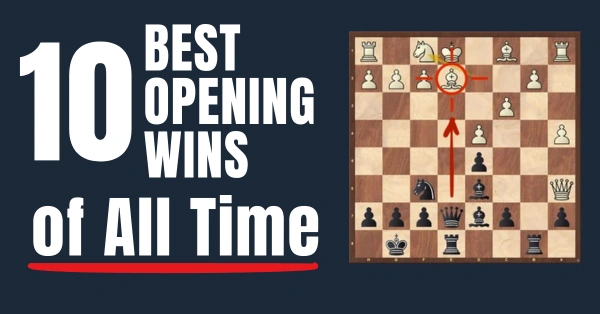
Let’s take a look at my selection of 10 Best Opening Wins of All Time… Chess miniatures are always fun to go over and analyze. They are usually possible only because one side makes a big mistake in the opening, allowing the opponent to take over the initiative. Nevertheless, they promise to be very entertaining and full of tactics.
There are many beautiful attacking games and opening traps you have to know. In this article, I’ve tried to bring a selection of pretty, short wins where something has gone very wrong in the opening for one side.
A few classics
1. Fink, A – Alekhine, A, Pasadena 1932
This is one of the must-know games. It is a typical example of how greed can be punished in the opening. In this game, Alekhine sacrifices a pawn for development and constantly tries to keep his opponent under pressure. He gets his pieces out with tempo and tries to keep his opponent’s king in the center for as long as possible. He includes all of his pieces in the attack and finally, when all of them are placed on optimal squares, delivers the deadly blow. The final position is quite famous and has been included in many tactics books.
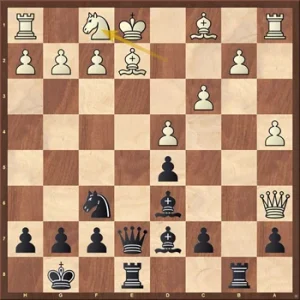
Play like Alekhine!
2. Lasker, E – Tarrasch, S, Berlin 1916
The Open Ruy Lopez (5…Nxe4) is known as a tricky and dangerous line nowadays. Theory is extremely well-developed and we are well aware that things could easily go wrong for the second player. However, theory was still being developed in 1916 and this is one of the reasons why we can find such beautiful and short wins. The following game is a good example of how white’s initiative and tactical ideas could unfold:
3. Botvinnik, M – Spielmann, R, Moscow 1935
It’s also thanks to the classical games that we now know that we shouldn’t go out picking up pawns in the opening, especially with the queen. There are many well-known patterns to trap a “brave” queen in the opening and these tactical ideas have all become easier to spot with the study of model games. In the following game, Botvinnik illustrates why the pawn on b2 is called a “poisoned pawn”:
4. Szukuszta, J – Tal, M, Uppsala 1956
Tal is famous for chaotic games and crazy sacrifices. When you study his games, you know that you are going to be entertained. This following game was a blitz game where he crushed his opponent in style. White’s mistake of opening up the center before putting his king into safety was immediately punished. Enjoy another Tal brilliancy:
5. Fischer, R – Fine, R, New York 1963
Bobby Fischer has played some impressive games that are worth knowing. However, a very nice miniature is his game against Fine in the Evans Gambit. A dangerous opening, black has to be very well prepared to meet it. In this game, black didn’t react in the best way and Fischer punished this immediately. One thing to notice though in all these games is the energy the winning side is playing with. As soon as their opponents ignore development, they start building the pressure and they don’t let go of it until the end of the game. They don’t back down from sacrificing material, just to keep the threats coming. See how Fischer won his game below:
A few surprising blunders
Blunders can happen at any level and they are more often seen in short time controls. But it is usually more surprising when very strong players make huge blunders in classical games. Anyone can have a bad day and this only shows that they are, after all, humans as well.
6. Christiansen, L – Karpov, A, Wijk aan Zee 1993
In this game, we see Karpov in a rare situation, where he is forced to resign only after 12 moves. This wasn’t some deep preparation from his opponent or a rare opening that he didn’t deal well with – it was an unusual blunder in a rather normal Queen’s Indian position. This is the position after black’s final move, where you have the chance to play like Christiansen and beat the former World Champion:
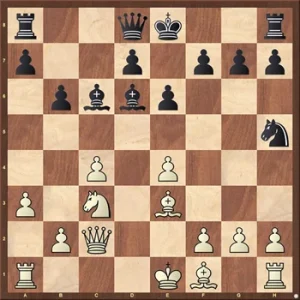
Play like Christiansen!
7. Morozevich, A – Kortschnoj, V, Calvia 2004
Viktor Kortschnoj has also been on the receiving end of an opening disaster. This blunder must’ve hurt double, as it happened in a team event – the Calvia Olympiad. Having the black pieces, he lost in only 13 moves against Alexander Morozevich. Here’s your chance to test your tactical skills:
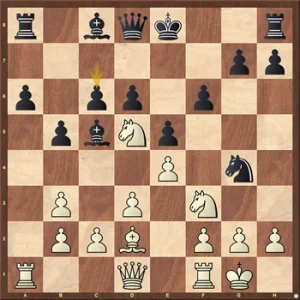
Black has just attacked the annoying central knight on d5. But what did he overlook?
Some modern entertainment
8. Svidler, P – Shirov, A, Leon 2004
This miniature happened in a rapid game, where things can spiral out of control very fast, especially in sharp lines. Svidler went for a rather new plan at that moment but didn’t find the best reply to Shirov’s plan. The game lasted only 13 moves and ended with a nice tactic:
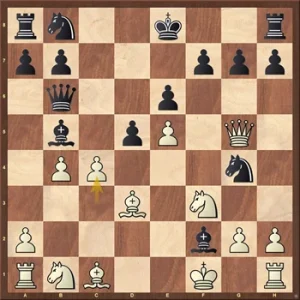
Black to play and win
9. Kasparov, G – Timman, J, Riga 1995
With his aggressive style, it’s no wonder that Kasparov has a lot of nice short wins. This one against Timman was very convincing and shows why the passive play wasn’t a good choice against him. Timman tried to go for a quiet line, but something went very wrong and instead, he quickly fell into a much worse position. In the diagrammed position, he has just played the move 8…Nbd7, which is a big mistake. Can you find out why?
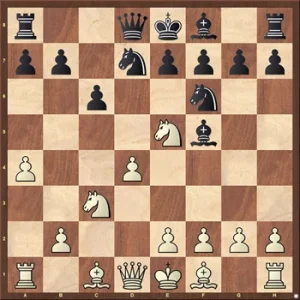
White to play and get a big advantage
10. Kramnik, V – Beliavsky, A, Belgrade 1995
I’ve decided to end this presentation with Kramnik’s brilliant win against Alexander Beliavsky. This is another great example of how energetic play is almost always the answer when the opponent wastes too much time in the opening. In the following diagram, it is obvious that black has gone to great lengths to prevent white’s e2-e4 push, but this has cost him a lot of time and some weaknesses. On top of this, it turns out that black’s plan has been completely unsuccessful since white has a very strong move at his disposal. Can you find it?
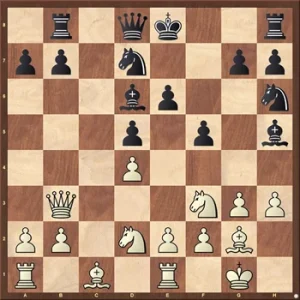
Play like Kramnik!
The common theme in these games seems to be that wasting time in the opening is rarely a good idea. If you are faced with this in a game, remember that seeking the initiative with active, energetic play is the answer. Force your opponent to defend and don’t be afraid to sacrifice some material to increase the pressure!
You also might like 10 Shortest Grandmaster Defeats as well as Top 10 Biggest Blunders Grandmasters Made at Chess.
Want to score your own quick opening wins?
GM Damian Lemos just finished recording his massive training on King’s Indian Defense for Black. This is one of the top scoring openings for club players and beyond.
If you want to learn how to win with KID… GM Lemos is here for you.
Click here to get started with King’s Indian Defense: Lemos Formula 60% OFF




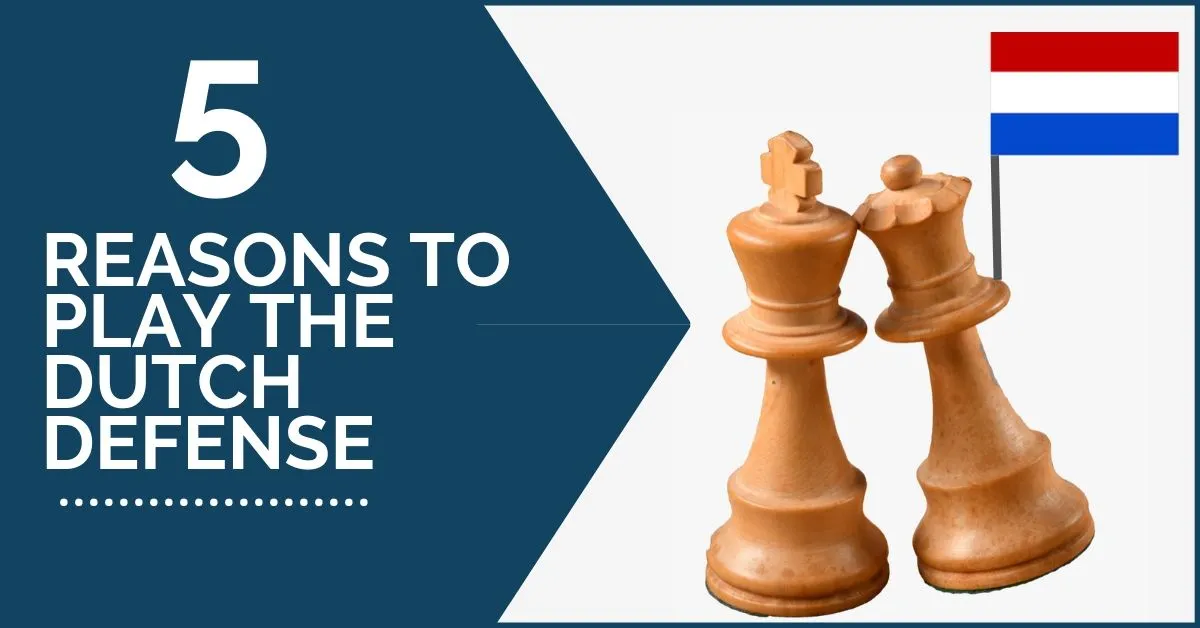
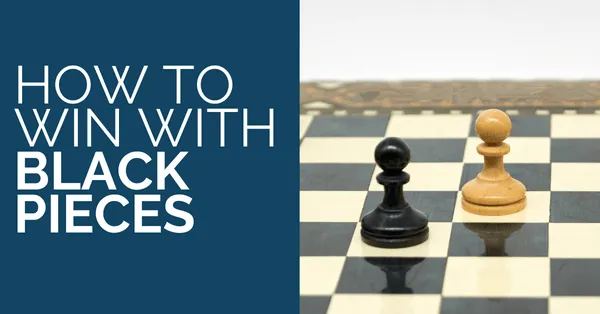




Comments: